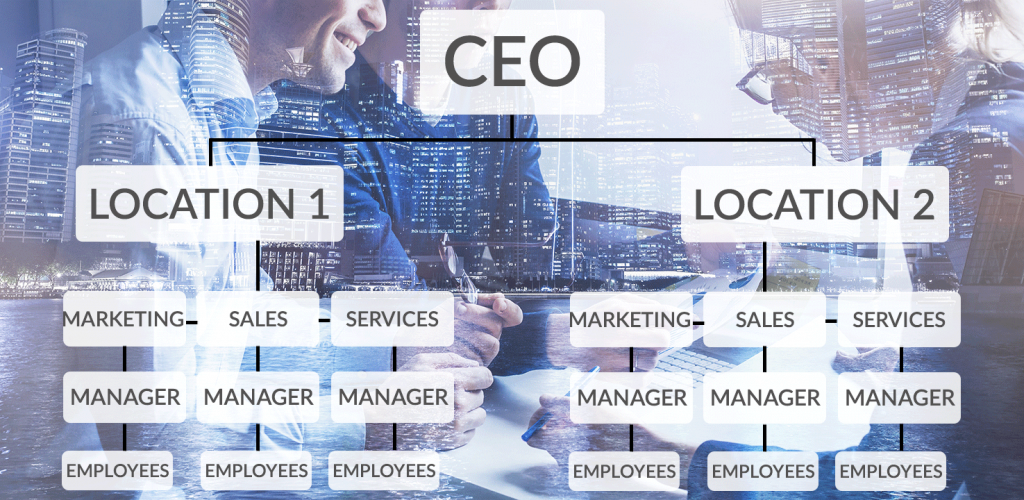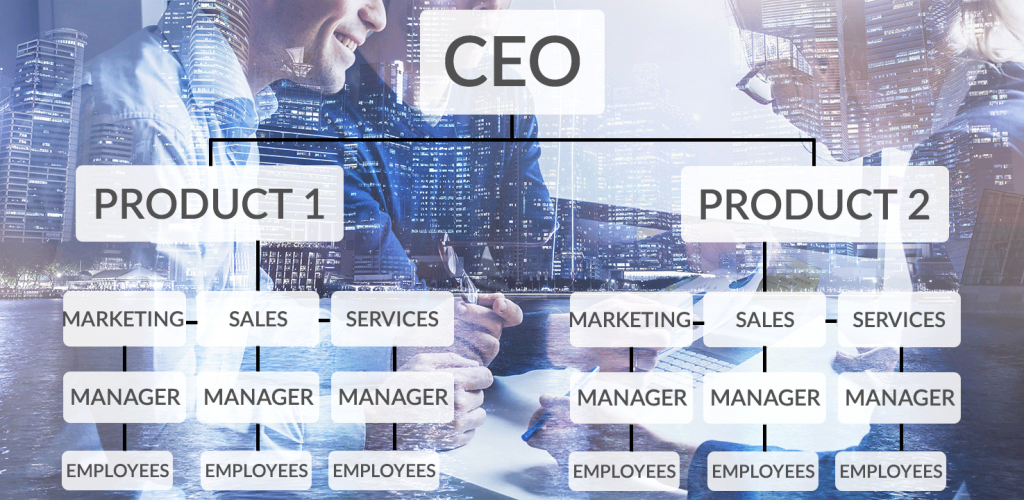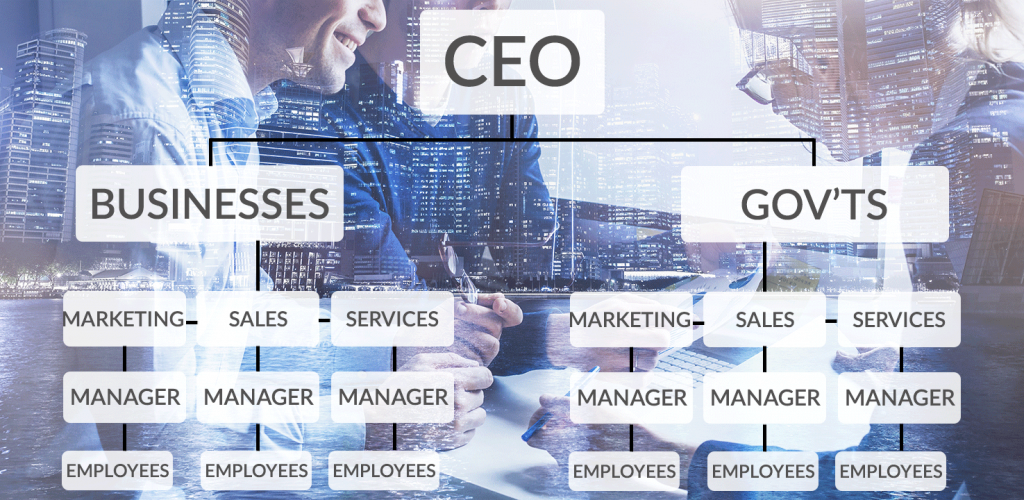6 Types of eCommerce Management Structures for Your Business

Most online businesses start out with only one or two employees. Founders are expected to play the part of CEO, sales representative, marketer, designer, production worker, and more. But, as a business grows, it becomes necessary to expand the team behind it. Reaching this milestone is great! It’s a sign of success and big things yet to come. However, adding new employees to the payroll can also pose logistical problems. Formerly unwritten policies need to be committed to paper, or created anew. Schedules and timelines need to be established. A formal structure for management needs to be put in place to develop efficient processes. This articles focuses on ecommerce management structures, to help businesses decide which structure is best for them. Some of the most common structures include:
- Functional
- Flat
- Geographical
- Product-based
- Market-based
- Process-based
Functional

The functional management structure is one of the most popular with businesses. As the name suggests, it groups workers based on the function they perform within a company. Functions/groups may include marketers, salespeople, production, shipping, customer service, and more. In most cases, functional ecommerce management structures also follow a hierarchical pattern, in which there is a clear chain of command. For example, an entry-level employee reports to a manager, while the manager reports to the department head and so on. A functional structure is great at allowing businesses to grow and enables employees to play to their strengths. However, this type of organization within a business also tends to isolate groups of employees which may become a barrier to effective communication.
The Flat eCommerce Management Structure

Although the functional management structure is one of the most popular, many businesses don’t like its hierarchical nature. Instead, they choose to employ a flat structure, which is characterized by reducing the number of leadership tiers. With this structure, all employees are close to a member of management. This reduces the number of levels a message must pass through to reach its recipient, making communication more effective. In addition, by reducing the number of management tiers, the flat structure eliminates some of the intimidation lower-level employees feel towards the top-tiers of management. The main disadvantage with a flat ecommerce management structure relates to how well the structure is defined. If all employees can reach out to all managers, it may become confusing to know which is the best person to bring an issue up with. Having a clearly written list of roles can help to avoid this problem.
Geographical

A geographical management structure is only suitable for a business that operates in more than one location. It divides the management up between locations, which may actually result in different managerial styles in each location. This type of organization within a business allows each branch of the structure to make decisions based on the unique supply-and-demand needs faced by each location. For example, a location in a low-traffic area may decide to build a larger marketing team. Businesses may choose to employ a geographical structure if they have multiple storefronts in a city, a franchise across a state, or a multi-national business operating in countries around the world. The most common downfall of geographic organizations is that each branch may start making decisions without consulting other branches, which can decrease overall brand strength.
Product-Based

A product-based ecommerce management structure develops a division of management and employees based on product lines. With this structure, various departments are created based on the products a business sells, and employees are assigned to a specific department. This allows everyone to become an expert regarding the specific product line they’re assigned to. For example, a clothing company may divide its employees into a womenswear and menswear division. This type of structure is most popular with big businesses who sell a wide range of products. However, when used in small businesses, it can help small teams focus on product development to get new items to market faster.
Market-Based

A market-based management structure is similar to a product-based one. However, instead of creating departments based on a product, divisions are created based on the audiences a business caters to. For example, a web-design business may have individuals, other small businesses, and governments as audience members and potential clients. Different marketing techniques will work best for each audience, so the company would create a division for each. With this structure, the main disadvantage is that each branch may begin working with too much autonomy and too little communication. Marketing techniques may unintentionally weaken those of other branches and some processes may be duplicated, which ultimately leads to time wasted.
Process-Based

A process-based ecommerce management structure has many similarities to a functional structure. Workers are divided based on the role they perform in the company, such as research and development, marketing and sales, and order fulfillment. Within each role division is a hierarchy that includes entry-level workers and management. However, the process-based structure more clearly outlines how different divisions within a company should communicate with one another. Specifically, this type of structure creates a guideline for how a product should move through a company. For example, once research and development completes their work, the process-based structure dictates that they then pass their work on to the marketers and sales people, who then inform the order fulfillment team of an order that needs to be filled. This type of structure helps improve the speed and efficiency with which a business operates. Its main disadvantage arises when employees are unfamiliar with the system: they may pass work and messages to the wrong people which interrupts smooth workflow.
Visit Shopivo and stay tuned for exciting news and updates! Sign up for our emails and stay up-to-date on new developments and features.
